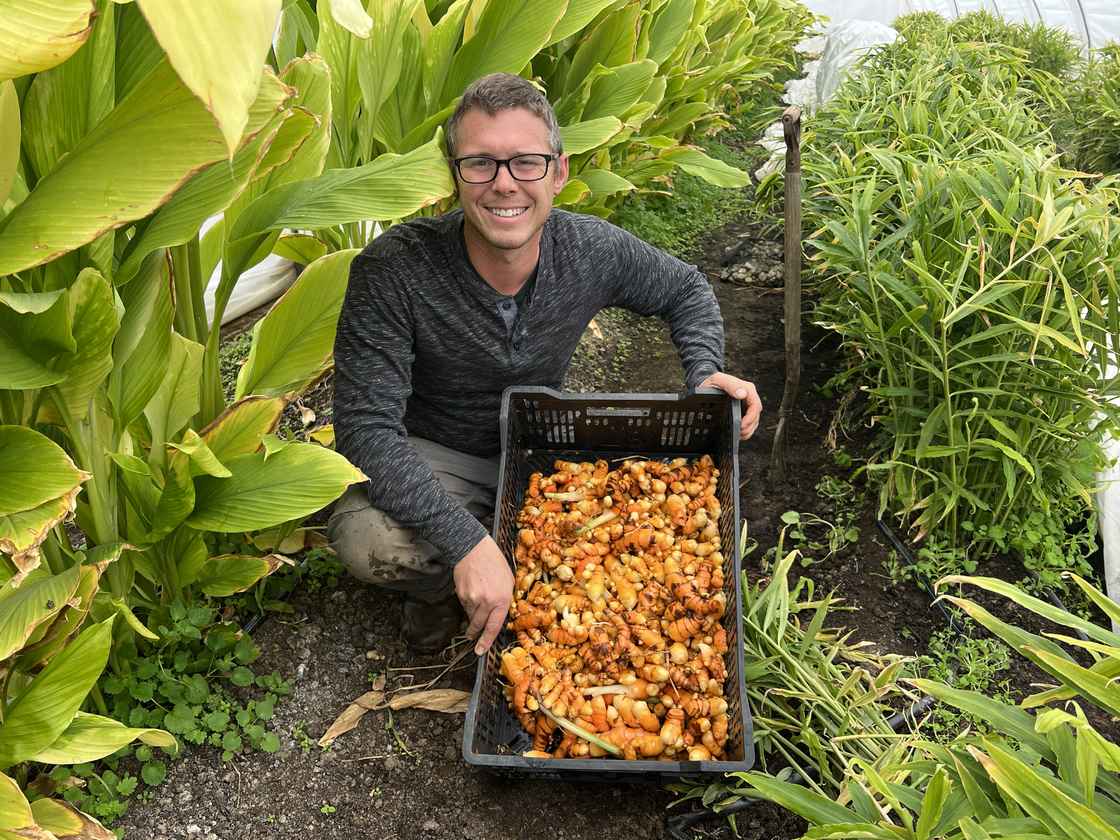Learn how to grow these flavorful and fun tubers!
By following a few simple principles, almost anyone can grow these crops!
LEARN 5 TIPS TO HELP YOU DOUBLE YOUR TURMERIC YIELDS WITH OUR FREE EGUIDE.
We're consistently getting over 3 pounds of premium turmeric root per ft of row and you could be to!
Drop your info below, and we'll send you the free eguide to double your yields!
How do the numbers stack up for this specialty crop?
Farmers and homesteaders are profiting big $$
Getting Started with Tumeric
If you’re looking for a nutritious addition to your farm, turmeric is the ideal choice. Not only is it a low-maintenance crop, but it’s also incredibly healthy. This spice has been used for centuries and is known for its many medicinal properties. But if you’ve never grown turmeric before, where do you start? Let’s take a look at the step-by-step process of growing turmeric on your farm.
1. Choose Your Turmeric Varieties
The first step to growing turmeric is to select which variety you want to plant. The most popular varieties of turmeric that we find grow in the US include Blue, White, Black, and Red Hawaiian. We've had the best luck with one called Giant Yellow. Each variety has its own unique flavor and texture characteristics, so choose which one best fits your needs. For most of the US and Canada, we find folks pre-sprout turmeric inside starting 8-12 weeks before planting out. This gives a jump on the season and allows it to be successfully grown as far north as zone 3 Canada!
2. Prepare Your Soil
Before planting your turmeric, you must prepare your soil. Turmeric prefers well drained soil with plenty of organic matter such as compost or aged manure added in order to provide the necessary nutrients for optimal growth and health. Make sure that the soil pH is between 6 and 7 and that there are no weeds present before planting.
3. Planting Your Turmeric
Once your soil is ready, it’s time to plant! Plant the rhizomes (or plants) about four inches deep into the soil with 6 to 12 inches of space between each rhizome to ensure proper air circulation around them. The best time to plant is in late spring or early summer, when temperatures are warm enough for optimal growth, but not too hot where the rhizomes will dry out quickly in direct sunlight.
Conclusion:
Growing turmeric on your farm can be an incredibly rewarding experience; not only will you reap the benefits of this nutrient-packed superfood, but you will also have access to fresh ingredients straight from your own farm or backyard! We have found that customers eagerly seek out fresh turmeric for cooking, smoothies, and tinctures. Happy harvesting!


